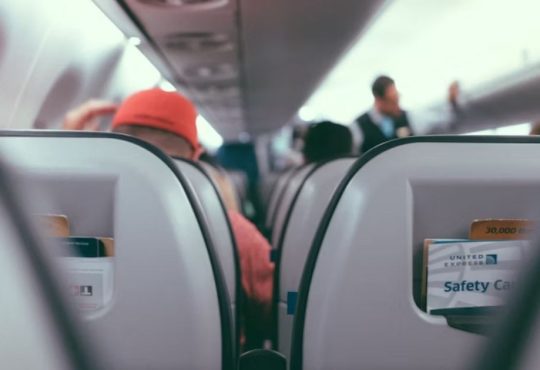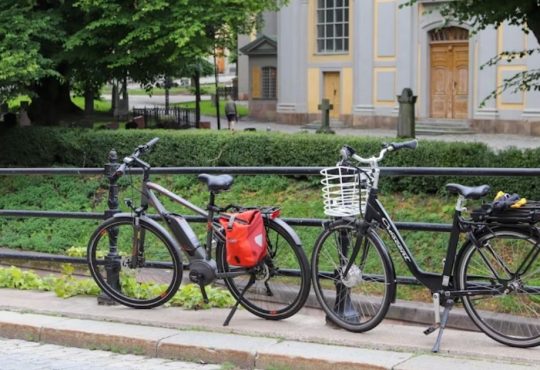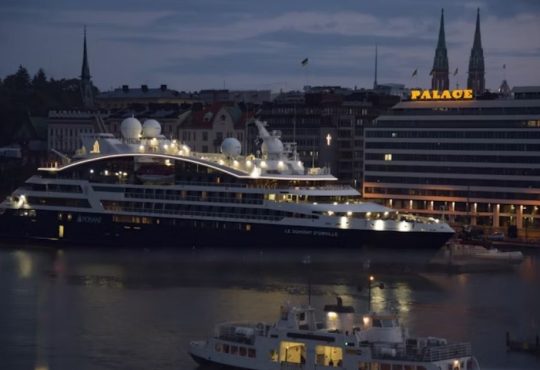In a world where leisure and business travel once centered on glamor, affordability, and convenience, travel safety was traditionally a quiet constant, assumed, taken for granted, and rarely questioned except in extreme or unstable environments. However, the global events 2020 triggered a seismic shift in travel behavior, values, and psychology. Today, travel safety has evolved into the defining pillar of travel value, no longer a passive expectation but a competitive advantage that reshapes everything from destination marketing to traveler decision-making.
How Safety Became the Foundation of Travel Value
Then: Safety as an Assumption
Pre-2020 Travel Mindset
Before the COVID-19 pandemic, travel decisions were driven by a trio of dominant motivators:
- Affordability: Price comparison tools and flash deals reigned supreme. Budget airlines, hostel aggregators, and last-minute discounts fueled a democratization of travel. Value was synonymous with saving money.
- Instagrammable Aesthetics: The visual appeal of a destination—its beaches, food, architecture, and culture—was increasingly filtered through the lens of social media. Platforms like Instagram, Pinterest, and YouTube set the tone, dictating trends and influencing where people went, when, and why.
- Ease of Access: Convenience took many forms: mobile check-ins, instant bookings, visa-free entries, and curated travel experiences that reduced planning friction. Travelers gravitated toward destinations that offered logistical simplicity.
Safety’s Passive Role
Safety was seldom questioned in this landscape unless travel advisories or headlines flagged a destination. It existed in the background, part of an unspoken social contract with airlines, hotels, and tour operators. Safety was assumed to be a given unless one strayed far off the beaten path. Risk analysis was limited to checking travel insurance options or skimming TripAdvisor reviews for red flags.
Now: Safety as the Cornerstone
The Global Reset of 2020
The abrupt suspension of global travel brought on by COVID-19 exposed significant vulnerabilities in the travel industry’s core assumptions. Almost overnight, priorities shifted from affordability to a heightened focus on safety and protection. Within months, safety transformed from a silent assumption into the dominant lens through which every facet of travel was scrutinized.
The New Travel Questions:
- Is this destination managing its health protocols effectively?
- Are hotels and restaurants maintaining consistent and reliable sanitation standards?
- Will I have access to reliable medical care if I get sick?
- Are local communities receptive and respectful of visitors?
- How are travelers being supported emotionally, especially when restrictions shift suddenly?
Safety as a Total Experience
This expanded definition of safety extends beyond physical protection to emotional and mental well-being. Today’s travelers assess not only whether a place is virus-free but also whether it feels psychologically secure. This consists of the following aspects:
- Sanitation and Hygiene: Daily deep-cleaning, touchless services, HEPA-filtered air systems, and well-communicated cleaning schedules have become standard expectations.
- Health Protocol Transparency: Hotels and airlines now highlight their health policies more prominently than amenities. QR-code menus, contactless check-in, and visible compliance signage reassure guests.
- Flexibility and Control: Free cancellations, changeable bookings, and flexible rebooking terms have become perks and essential trust indicators. Travelers seek the flexibility to adapt amid uncertainty.
- Support Systems: Real-time travel updates, responsive customer service, and access to mental health resources are increasingly integral to hospitality providers’ value propositions.
The Rise of the Safety-Conscious Traveler
The global health crisis did not extinguish the innate human urge to explore; instead, it reshaped the contours of that desire. Travel in the post-pandemic landscape has undergone a profound psychological transformation. While the passion for discovering new cultures, environments, and experiences endures, it is now tempered by heightened awareness, meticulous preparation, and a calculated approach to risk. The archetype of the carefree wanderer has given way to a new profile: the safety-conscious traveler.
Modern travelers are not less adventurous—they are more informed, discerning, and strategic. Curiosity is now coupled with critical thinking. Destination choices are no longer based solely on climate, scenery, or cost but on a multidimensional analysis that includes public health data, infrastructure quality, and crisis response capabilities. Real-time updates on infection rates, access to traveler forums offering firsthand narratives, and independent evaluations of safety measures are all factored into the decision-making process. This represents a significant shift from reactive behavior to proactive risk management.
The evolution of traveler consciousness is also evident in how different demographic groups have recalibrated their priorities:
Families have emerged as the most selective travelers in the post-pandemic era. When planning a trip, child-friendly infrastructure is no longer sufficient. There is a heightened expectation for destinations to offer certified sanitation protocols, medical accessibility, and activities that limit crowd exposure. The safety of children is non-negotiable, and parents now demand detailed transparency regarding emergency response mechanisms and health services.
Solo travelers, particularly women, are seeking more than just adventure and solitude. There is an increasing demand for inclusive and supportive ecosystems that promote personal safety. This includes vetted accommodation options with high-security ratings, digital platforms enabling community connections, and local services prioritizing gender-sensitive hospitality. Trust in the environment has become as essential as the destination’s allure.
Corporate travelers represent another category where priorities have shifted substantially. Companies are now expected to uphold robust duty-of-care policies for professionals who must travel for business for professionals who must travel for business. This includes the integration of real-time risk intelligence, automated alerts, and contingency protocols for geopolitical instability or health crises. Travel management no longer focuses only on logistics and cost—it must also encompass employee well-being, insurance coverage, and compliance with global safety standards.
Older adults are particularly attuned to a location’s medical readiness. The decision to travel is now closely tied to the proximity of high-quality healthcare facilities, the reliability of travel insurance for age-specific needs, and the ability to avoid high-risk zones. This demographic is acutely aware that access to care can directly influence the outcome of a trip and, in some cases, the decision to travel at all.
This growing awareness has catalyzed a broader cultural shift in the perception of travel. Instead of being seen as spontaneous escapism, travel is increasingly regarded as a strategic endeavor that demands careful planning and proactive safeguards. The rise of the safety-conscious traveler underscores a new ethos: experience must be meaningful but secure. In this transformed landscape, thoughtful preparation is not a hindrance to adventure but the very foundation that supports it.
Travel is increasingly seen not as a spontaneous escape but as a strategic endeavor that demands careful planning and proactive safeguards.
Safety as a Competitive Advantage in Travel Safety 2025
Marketing the Message of Safety
Hotels, airlines, tour operators, and national tourism boards have evolved from merely implementing safety protocols to proudly showcasing them as defining elements of their brand essence. Safety is no longer hidden in the fine print—it has become a primary value proposition. Businesses now compete on transparency, preparedness, and responsiveness:
Airlines
- Breathe cleaner with advanced HEPA filtration — eliminating 99.97 percent of airborne particles, from allergens to pollutants. Turn your space into a haven brimming with clean, invigorating air.
- Highlight routine cabin sanitization between flights, including the use of hospital-grade disinfectants.
- Emphasize crew health and safety training with clear protocols for handling in-flight emergencies related to public health.
- Communicate policies for mask mandates, touchless boarding, and passenger screening with visual signage and digital pre-travel briefings.
Hotels
- To build traveler trust, showcase international hygiene certifications (e.g., from WHO-affiliated bodies or local health ministries).
- Offer pandemic-readiness scores or audits, often conducted by third-party safety consultants.
- Integrate 24/7 telemedicine services into room packages, allowing guests access to medical advice without leaving the premises.
- Upgrade amenities to include sanitization kits, in-room contactless services, and enhanced cleaning rotations for high-touch areas.
Destinations (Cities and Countries)
- Rebrand themselves as “wellness-focused” or “low-density” retreats to align with modern travelers’ risk mitigation preferences.
- Market nature-centric tourism and wide-open landscapes for socially distanced recreation.
- Highlight low local infection rates, healthcare infrastructure, and streamlined entry requirements to reassure potential visitors.
- Launch public campaigns around “safe tourism seals” that verify business compliance with health protocols.
Technology’s Role in Enabling Safe Travel
Digital innovation has accelerated rapidly to meet new demands, enabling safer journeys while enhancing convenience and personalization. These technologies serve not only as protective measures but also as sources of assurance and operational efficiency:
Mobile Health Passports
- Store and verify vaccination records, negative COVID-19 test results, and travel clearances in a digital, encrypted format.
- Integrate with airline systems and immigration databases to streamline check-ins and border crossings.
- Enable pre-clearance for entry into countries with evolving health requirements.
Contactless Payments and Digital Concierge Services
- Reduce physical exchanges by enabling touch-free transactions at hotels, restaurants, and tour services.
- Enable guests to request room service, book spa treatments, and manage check-in or check-out seamlessly through mobile apps or in-room tablets.
- Provide multilingual, automated assistance, reducing reliance on face-to-face communication while enhancing user experience.
AI-Driven Alerts and Risk Intelligence
- Provide real-time updates on travel advisories, natural disasters, public health alerts, and civil disturbances.
- Assist travelers in anticipating and avoiding risks by tracking local infection rates and pinpointing crowded areas.
- Integrate with booking platforms to offer dynamic rebooking options and re-routing suggestions based on evolving conditions.
The industry is reshaping how trust is earned and maintained by transforming safety into a visible, interactive, and tech-supported element of the travel experience. Organizations that prioritize transparency adapt swiftly to new data and invest in seamless protective solutions to safeguard their customers and competitive edge.
Psychological Shifts: From FOMO to Peace of Mind
The Emotional Component of Safety
Where once the fear of missing out (FOMO) drove spontaneous travel decisions, the desire for peace of mind now underpins most journeys. Travel is no longer about chasing trends but cultivating a sense of security and control.
- Slower, intentional travel is replacing whirlwind itineraries.
- Nature-based escapes are gaining traction in overcrowded cities.
- Smaller group sizes, private rentals, and customized experiences replace mass tourism.
Safety as a Long-Term Value Metric
A Permanent Shift in Travel Evaluation
As the world transitions out of crisis mode, safety will not revert to being a secondary concern. Like quality, comfort, and sustainability, it has become a core element of travel’s value system.
Future trends influenced by safety-first mindsets may include:
- Insurance-integrated bookings, where every trip comes with built-in health and cancellation protection.
- Destination safety scores are visible on travel platforms and search engines.
- Standardized global health certifications across hospitality sectors.
Safety as the Cornerstone of Modern Travel
The global travel industry has experienced a profound transformation, not just in operations but in ethos. Safety, once a silent assumption, has become the loudest voice in the room. It shapes how travelers choose, how providers operate, and how they evaluate experiences. In a post-pandemic world, travel is no longer just about where one goes, but how safe one feels while getting there and being there. As travelers seek meaningful, restorative, and secure journeys, safety will remain the bedrock of modern travel value.





